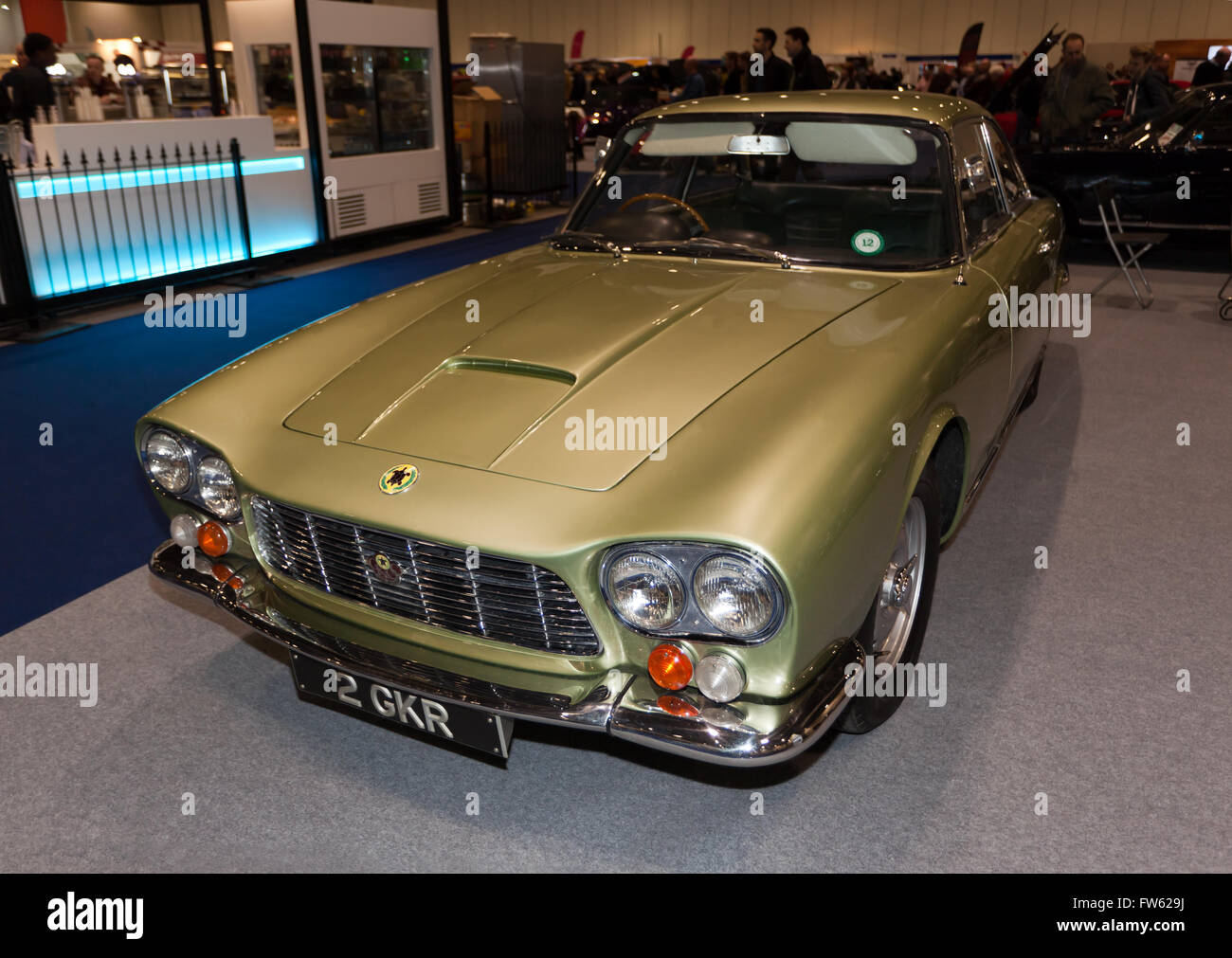A 1964, 5367cc, Gordon-Keeble, in the Gordon-Keeble owners Club stand, in Car Club Square, at the London Classic Car Show 2016.

Image details
Contributor:
John Gaffen / Alamy Stock PhotoImage ID:
FW629JFile size:
53.3 MB (1.6 MB Compressed download)Releases:
Model - no | Property - noDo I need a release?Dimensions:
5124 x 3634 px | 43.4 x 30.8 cm | 17.1 x 12.1 inches | 300dpiDate taken:
19 February 2016Location:
ExCeL London, One Western Gateway, Royal Victoria Dock, London, E16 1XLMore information:
1964 Gordon Keeble 5367cc. Gordon-Keeble was a British car marque, made first in Slough, then Eastleigh, and finally in Southampton (all in England), between 1964 and 1967. The marque's badge was unusual in featuring a tortoise — a pet tortoise walked into the frame of an inaugural photo-shoot, taken in the grounds of the makers. Because of the irony (the slowness of tortoises) the animal was chosen as the emblem. The Gordon-Keeble came about when John Gordon, formerly of the struggling Peerless company, and Jim Keeble got together in 1959 to make the Gordon GT car, initially by fitting a Chevrolet Corvette V8 engine, into a chassis by Peerless, for a USAF pilot named Nielsen. Impressed with the concept, a 4.6 litre Chevrolet (283 c.i.) V8 was fitted into a specially designed square-tube steel spaceframe chassis, with independent front suspension and all-round disc brakes. The complete chassis was then taken to Turin, Italy, where a body made of steel panels designed by Giorgetto Giugiaro was built by Bertone. The car's four five-inch headlights were in the rare, slightly angled "Chinese eye" arrangement also used by a few other European marques, generally for high-speed cars such as Lagonda Rapide, Lancia Flaminia and Triumphs, as well as Rolls-Royce. The interior had an old luxury jet feel, with white on black gauges, toggle switches, and quilted aircraft PVC. The car appeared on the Bertone stand in March 1960, branded simply as a Gordon, at the Geneva Motor Show. At that time problems with component deliveries had delayed construction of the prototype, which had accordingly been built at breakneck speed by Bertone in precisely 27 days. After extensive road testing the car was shipped to Detroit and shown to Chevrolet management, who agreed to supply Corvette engines and gearboxes for a production run of the car. The car was readied for production with some alterations, the main ones being a larger 5.4-litre (327 c.i.) 300 hp (224 kW; 304 PS) Chevrolet V8 engine